The Man Who Laughs (1928 film)
8.5 /10 2 Votes8
Initial DVD release September 30, 2003 Country United States | 7.8/10 IMDb Genre Drama, Horror, Mystery Duration | |||||||||||||||||||||||||||||||||
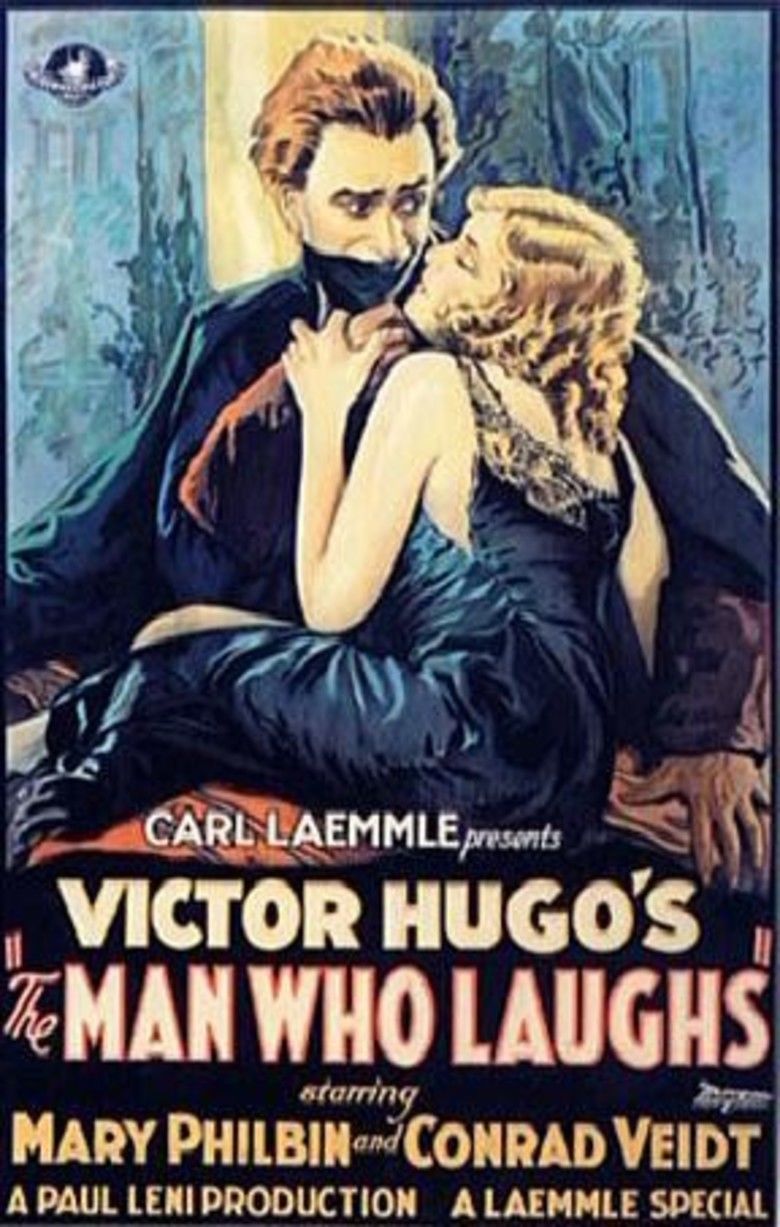 | ||||||||||||||||||||||||||||||||||
Language SilentEnglish intertitles Release date April 27, 1928 (1928-04-27) (NYC Premiere)November 4, 1928 (1928-11-04) Writer Victor Hugo (novel), J. Grubb Alexander (adaptation), J. Grubb Alexander (continuity), Walter Anthony (titles) Film series Universal horror Film Series Cast (Gwynplaine), (Dea), (Duchess Josiana), (Barkilphedro), (Ursus), (Lord Dirry-Moir) Similar movies Clown , Stephen King's It , Dumbo , Water for Elephants , 31 , Freaks | ||||||||||||||||||||||||||||||||||
The man who laughs trailer english subtitles
The Man Who Laughs is a 1928 American silent horror film directed by the German Expressionist filmmaker Paul Leni. The film is an adaptation of Victor Hugo's novel of the same name and stars Mary Philbin as the blind Dea and Conrad Veidt as Gwynplaine. The film is known for the grim carnival freak-like grin on the character Gwynplaine's face, which often leads it to be classified as a horror film. Film critic Roger Ebert stated, "The Man Who Laughs is a melodrama, at times even a swashbuckler, but so steeped in Expressionist gloom that it plays like a horror film."
Contents
- The man who laughs trailer english subtitles
- The man who laughs 1928 1 11
- Plot
- Cast
- Production
- Music and sound
- Theatrical release
- Home media
- Contemporary
- Modern
- Legacy
- Later adaptations
- References
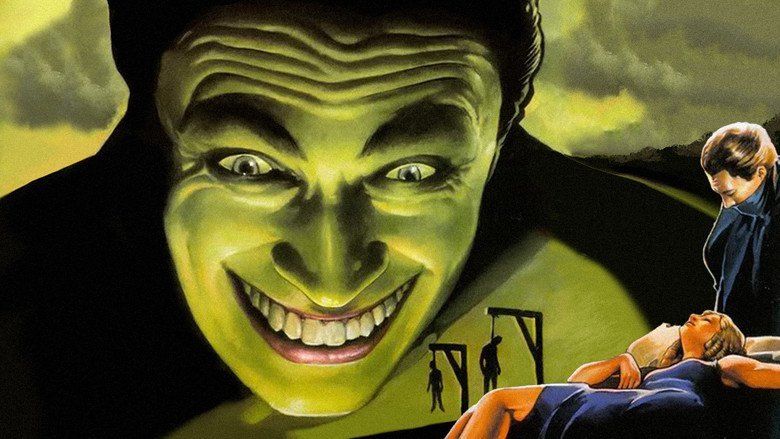
The Man Who Laughs is a Romantic melodrama, similar to films such as The Hunchback of Notre Dame (1923). The film was one of the early Universal Pictures productions that made the transition from silent films to sound films, using the Movietone sound system introduced by William Fox. The film was completed in April 1927 but was held for release in April 1928, with sound effects and a music score that included the song, "When Love Comes Stealing," by Walter Hirsch, Lew Pollack, and Ernö Rapée.

Conrad Veidt's character, Gwynplaine, was known to have been an inspiration for the creation of the comic book character, The Joker, Batman's arch nemesis, by Jerry Robinson, Bill Finger, and Bob Kane.
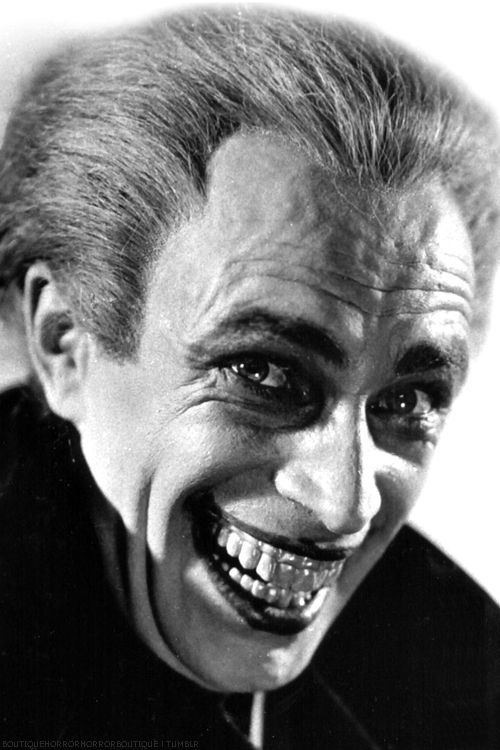
The man who laughs 1928 1 11
Plot

In 1690's England, King James II sentences his political enemy, Lord Clancharlie, to death in an iron maiden. Clancharlie's son, Gwynplaine, is disfigured with a permanent grin by comprachico Dr. Hardquannone, so that he will "laugh forever at his fool of a father". When the comprachicos are exiled, Gwynplaine is deserted. He discovers a blind baby girl, Dea, who has also been abandoned. Together, they are taken in by the mountebank Ursus.
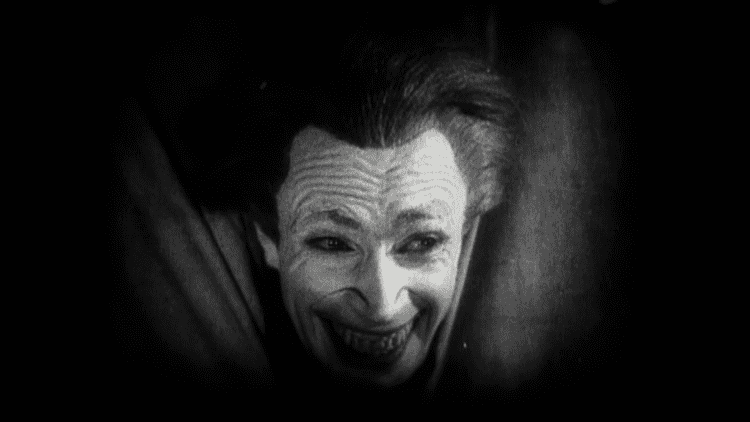
Years later, a now-adult Gwynplaine has become The Laughing Man, the freak show star of a traveling carnival. He and Dea have also fallen in love; he remains distant, believing himself unworthy of her affection due to his disfigurement, although she cannot see it. Meanwhile, the jester Barkilphedro, who had been involved in Lord Clancharlie's execution, is now attached to the court of Queen Anne. He discovers records that reveal Gwynplaine's lineage and rightful inheritance. That estate is currently possessed by sexually aggressive vamp Duchess Josiana.
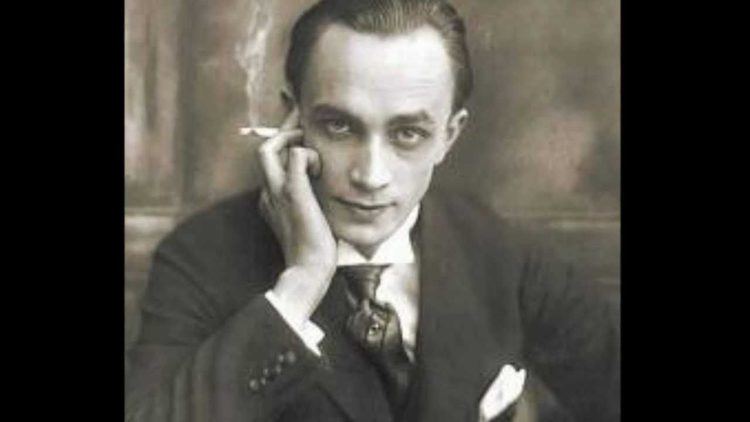
Queen Anne grants Gwynplaine his peerage and a seat in the House of Lords, and orders Josiana to marry him in order to restore the proper ownership of the estate. Josiana, interested in the estate and perversely attracted to Gwynplaine's disfigurement, attempts to seduce him. Ultimately, he rejects her advances, renounces his title, and refuses the Queen's order of marriage. He escapes, pursued by guards in a chase punctuated by swordplay. At the docks, he meets back up with Dea and Ursus, and rejoins them as they set sail away from England.
Cast
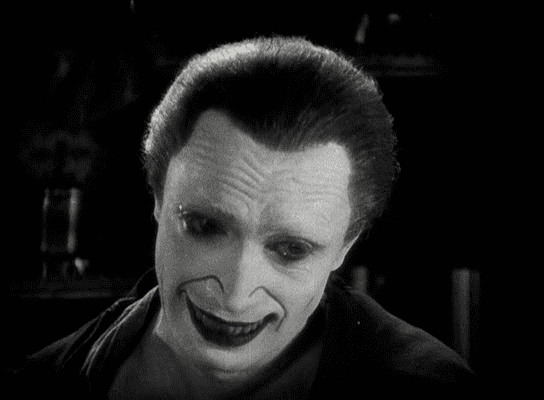
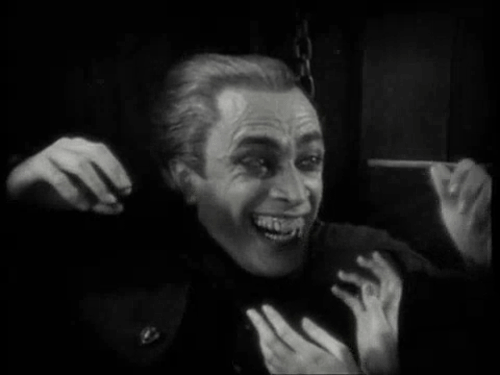
Veidt plays a dual role as Gwynplaine's father, Lord Clancharlie. Many significant silent-era actors appeared in minor or uncredited roles, including D'Arcy Corrigan, Torben Meyer, Edgar Norton, Nick De Ruiz, Frank Puglia, and Charles Puffy. The animal actor used for the role of Homo, the Wolf was a dog named Zimbo, who had previously appeared in the Fox Film's 1927 Wolf Fangs.
Production
Following the success of Universal Pictures's 1923 adaptation of Victor Hugo's The Hunchback of Notre Dame, the company was eager to release another film starring Lon Chaney. A treatment adapting The Phantom of the Opera was prepared, but rejected by the Universal executives. In its place, Chaney was offered the lead in a film version of Hugo's The Man Who Laughs, to be produced under its French title (L'Homme Qui Rit) out of perceived similarity to Les Misérables. The Man Who Laughs, published in 1869, had been subject to significant criticism in both England and France, and was one of Hugo's least successful novels, but it had been filmed twice before. Pathé had produced L'Homme qui rit in France in 1908, and the Austrian film company Olympic-Film released a low-budget German version in 1921 as Das grinsende Gesicht.
Despite Chaney's contract, production did not begin. Universal had failed to acquire film rights to the Hugo novel from the French studio Société Générale des Films. Chaney's contract was amended, releasing him from The Man Who Laughs but permitting him to name the replacement film, ultimately resulting in the 1925 The Phantom of the Opera. After the success of Phantom, studio chief Carl Laemmle returned to The Man Who Laughs for Universal's next Gothic film "super-production". Laemmle selected two fellow expatriate Germans for the project. Director Paul Leni had been hired by Universal following his internationally acclaimed Waxworks, and had already proven himself to the company with The Cat and the Canary. Countryman Conrad Veidt was cast in the Gwynplaine role previously intended for Chaney. Veidt had worked with Leni for Waxworks and several other German films, and was well known for his role as Cesare in The Cabinet of Dr. Caligari. American actress Mary Philbin, who had played Christine Daaé opposite Chaney in Phantom, was cast as Dea.
Leni was provided with a skilled crew. Charles D. Hall was chosen to design the sets. He had previously adapted Ben Carré's stage sets to film for Phantom and had worked with Leni for The Cat and the Canary. Jack Pierce became the head makeup artist at Universal in 1926, and was responsible for crafting Gwynplaine's appearance.
During the sequence where Gwynplaine is presented to the House of Lords, the extras were so moved by Veidt's performance that they burst into applause.
Universal put over $1,000,000 into The Man Who Laughs, an extremely high budget for an American film of the time.
Music and sound
Films of the silent era were typically projected with musical accompaniment. Originally, the accompanying music varied not only by film but by venue, potentially featuring the performance of a live pianist or even a full orchestra in some theaters, but substandard or absent entirely elsewhere. By the late 1920s, the major film studios had largely shifted to recorded music, synchronized with the film, and distributed along with it.
The Man Who Laughed was initially released without music, but following the film's initial success, it was recalled and re-released with sound effects, a synchronized score, and a theme song, provided by the Movietone sound-on-film system. Leni did not employ the shrieking and creaking sound effects of horror theater (although he did in his following film, The Last Warning). Instead, the film's viewers are disconcerted by hearing the sounds of the crowds and audiences within the film (often laughing at or jeering Gwynplaine), while the main characters (including Gwynplaine himself) are left entirely silent. The film's theme song, "When Love Comes Stealing", was an Ernö Rapée instrumental piece previously used for some showings of the 1922 film Robin Hood, but with added lyrics by Walter Hirsch and Lew Pollack. The remainder of the score comprises music by William Axt, Sam Perry, and Rapée, and one piece by Gustav Borch which was later reused in the 1932 zombie film White Zombie.
Some of the score, such as the fast-paced melodramatic music used for the chase scene near the end of the film, contrasts sharply with the romantic "When Love Comes Stealing". This effect, although jarring, was probably intentional in order to make the theme song more memorable and encourage sheet music sales.
Theatrical release
The film premiered April 27, 1928, in New York, with two showings per day at the Central Theatre. Proceeds from opening night were donated to American Friends of Blérancourt, a humanitarian aid organization. According to Universal's house organ, The Gold Mine, these limited showings continued at least into May. Also in May, the film had its London premiere, at a trade show at the London Pavilion Theatre on the 2nd.
Home media
For many years, the film was not publicly available. In the 1960s, The Man Who Laughs was among the films preserved by the Library of Congress following a donation from the American Film Institute; along with 22 other such films, it was shown at the New York Film Festival in 1969. It was again screened by Peter Bogdanovich at the Telluride Film Festival in 1998, but remained largely unavailable until Kino International and the Cineteca di Bologna produced a restored version of the film from two American prints and an Italian print. This restoration was released on DVD by Kino on September 30, 2003. Slant Magazine gave this DVD 3.5 out of 5 stars, citing the overall quality of the restoration and the uniqueness of the included extras, including a home movie of Veidt. Kino included this DVD in their five-volume American Silent Horror Collection box set on October 9, 2007. Sunrise Silents also produced a DVD of the film, edited to a slightly longer runtime than the Kino restoration, released in October 2004.
Contemporary
Initially, the critical assessment of The Man Who Laughs was mediocre, with some critics disliking the morbidity of the subject matter and others complaining that the Germanic looking sets did not evoke 17th-century England.
Paul Rotha was particularly critical. In his 1930 history of film, The Film Till Now, he called The Man Who Laughs a "travesty of cinematic methods", and declared that in directing it, Leni "became slack, drivelling, slovenly, and lost all sense of decoration, cinema, and artistry".
Modern
As late as the 1970s, critical assessment of the film was largely negative. Writing for Film Quarterly after the New York Film Festival showing, Richard Koszarski described it as "overblown" and a "stylistic mishmash".
In recent times, the assessment has been more positive. Critic Roger Ebert declared it "One of the final treasures of German silent Expressionism." Film critic Leonard Maltin awarded the film 3 out of a possible 4 stars, calling it "Visually dazzling". It is among the films with a 100% rating at review aggregator website Rotten Tomatoes.
Legacy
The Man Who Laughs had considerable influence on later Universal Monsters films. Pierce continued to provide the makeup for Universal's monsters; comparisons to Gwynplaine's grin was used to advertise The Raven. Hall's set design for The Man Who Laughs helped him develop the blend of Gothic and expressionist features he employed for some of the most important Universal horror films of the 1930s: Dracula, Frankenstein, The Old Dark House, The Invisible Man, The Black Cat, and Bride of Frankenstein. Decades later, the themes and style of The Man Who Laughs were influences on Brian De Palma's 2006 The Black Dahlia, which incorporates some footage from the 1928 film.
The Joker, nemesis to DC Comics's Batman, owes his appearance to Veidt's portrayal of Gwynplaine in The Man Who Laughs. Although Bill Finger, Bob Kane, and Jerry Robinson disagree as their respective roles in the 1940 creation of the Joker, they agree that his exaggerated smile was inspired by a photograph of Veidt from the film. Heath Ledger's portrayal of the character in the 2008 film The Dark Knight makes this connection more direct by depicting the Joker's smile as the result of disfiguring scarring rather than an expression of his insanity. A 2005 graphic novel exploring the first encounter between Batman and the Joker was also titled Batman: The Man Who Laughs in homage to the 1928 film.
Later adaptations
Although prominent actors, including Christopher Lee and Kirk Douglas, expressed interest in taking the role of Gwynplaine in a hypothetical remake, there has been no American film adaptation of The Man Who Laughs in the sound era; however, there have been three adaptations by European directors. Italian director Sergio Corbucci's 1966 version, L'Uomo che ride (released in the United States as The Man Who Laughs, but in France as L'Imposture des Borgia) substantially altered the plot and setting, placing the events in Italy and replacing the court of King James II with that of the House of Borgia. Jean Kerchbron directed a three-part French television film adaptation, L'Homme qui rit, in 1971. Philippe Bouclet and Delphine Desyeux star as Gwynplaine and Dea; Philippe Clay appeared as Barkilphedro. Jean-Pierre Améris directed another French-language version, also called L'Homme qui rit, which was released in 2012. It stars Marc-André Grondin and Christa Théret, with Gérard Depardieu as Ursus.
Horror-film historian Wheeler Winston Dixon described the 1961 film Mr. Sardonicus, also featuring a character with a horrifying grin, as "The Man Who Laughs ... remade, after a fashion". However, its director, William Castle, has stated the film is an adaptation of "Sardonicus", an unrelated short story by Ray Russell, originally appearing in Playboy.
References
The Man Who Laughs (1928 film) WikipediaThe Man Who Laughs (1928 film) IMDb The Man Who Laughs (1928 film) themoviedb.org
